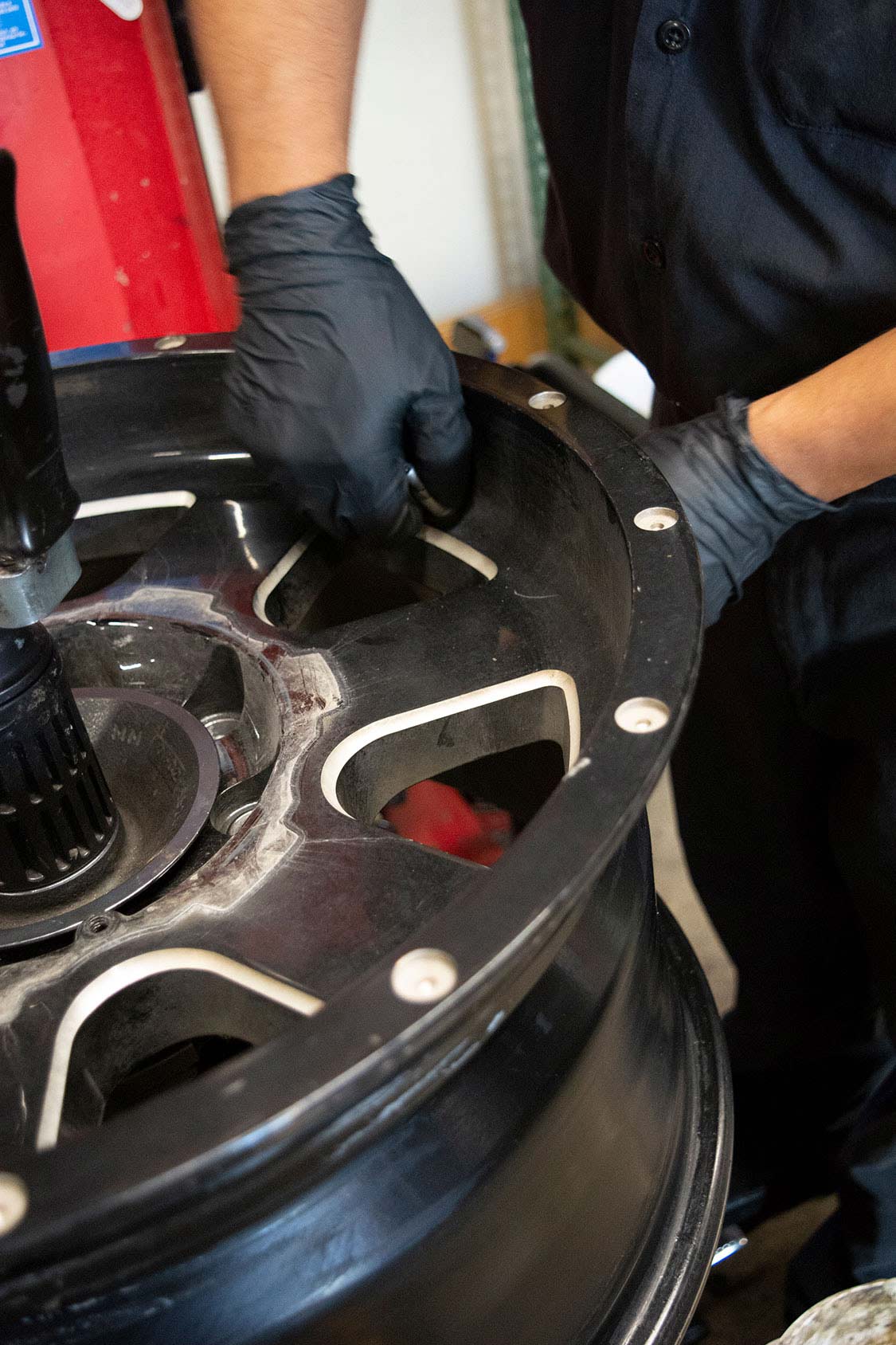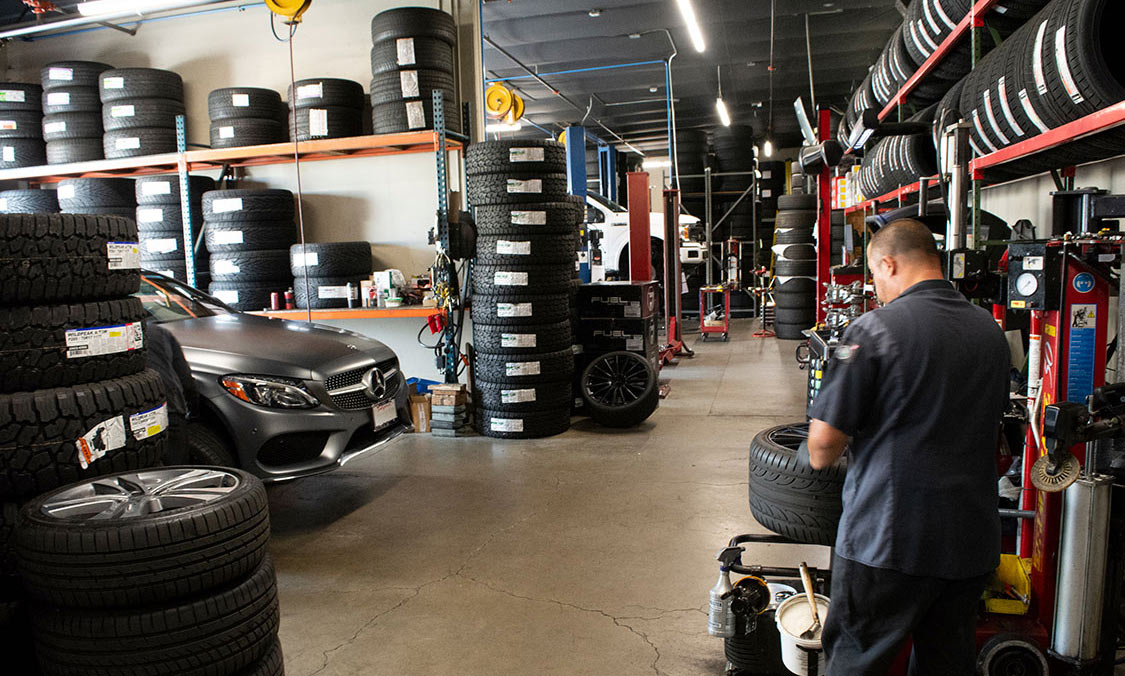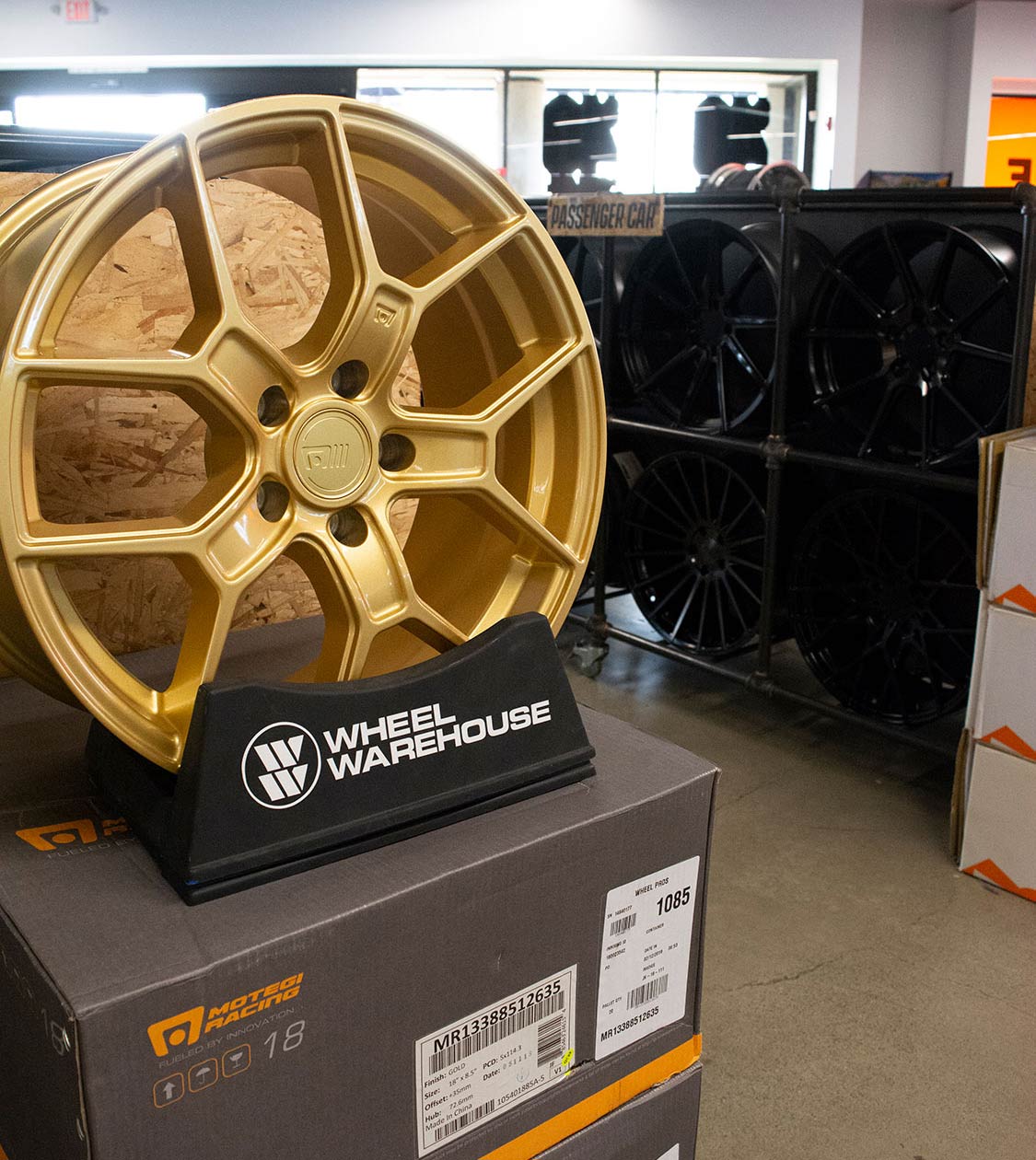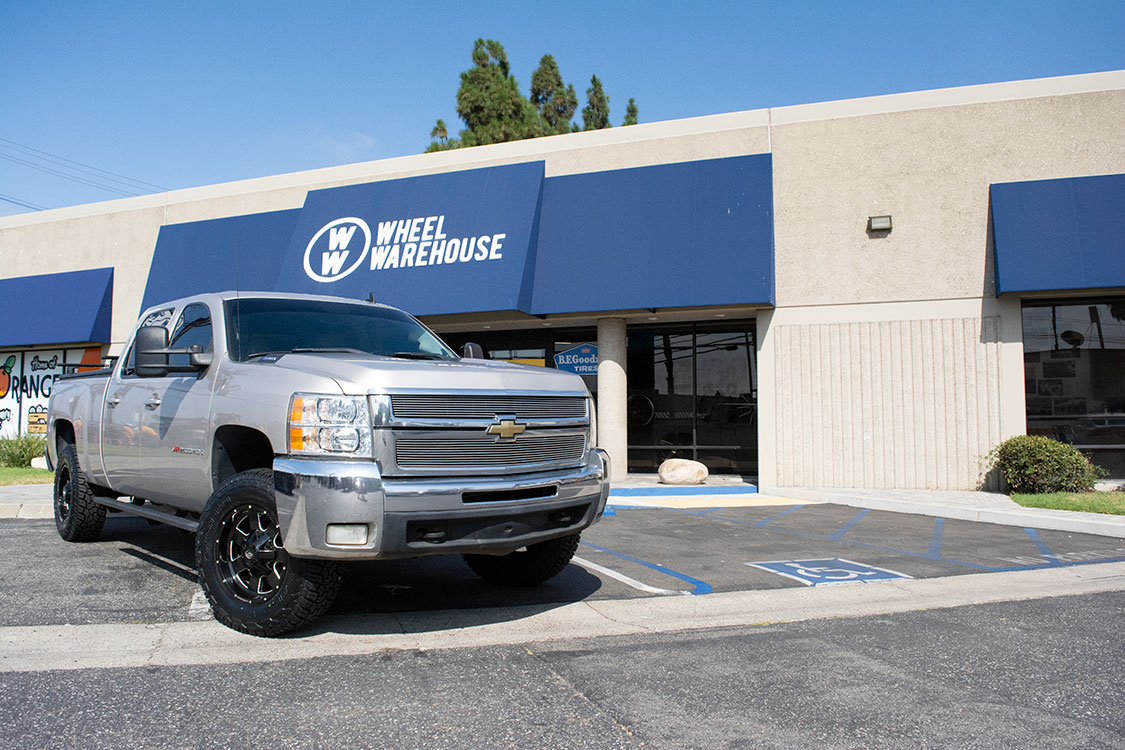 MICHAEL ECKERSON
.
January 17, 2023
.
All Feature Vehicles
MICHAEL ECKERSON
.
January 17, 2023
.
All Feature Vehicles

Wheels and tires are more technologically advanced than ever. Not to mention the vast array of choices a consumer has for both. It can be a little intimidating.
When we are in need (or want) of an upgrade, we research the many, many options and imagine how they will change the look of our vehicle. But these choices ultimately affect your safety and ride quality.
Then you go plunk down hard-earned money to buy your new alloy wheels and those tread-tastic wonders. It’s at this time when you really need to know how to care for them. Ongoing care and maintenance promotes the longevity of your tires, as well as the ride and drive quality. Regular attention to your wheels and tires can ultimately mean the difference in how long you will be able to safely use them to get you from point A to B, and back to A. Every day.



Turns out there’s a lot we don’t know – or we think we know, and we’re wrong. But in important situations like this, it’s important to have an ally.
We had the opportunity to sit down with Chris Granger from Wheel Warehouse in Orange, California, for a one-on-one to discuss and learn from his 30 years experience, and his staff’s wealth of knowledge on tires, wheels, and all things related.
Here are our top 11 questions. Keep score on the ones you didn’t know. They could be affecting your DRIVE!
D! Are tires that are out of alignment or balance always detected by steering-feel? Or can these conditions sometimes go unnoticed?
WW: No, steering feel only indicates potential issues with the front end. While it is the leading indicator of an issue, it is only one the many symptoms of a tire /wheel problem. We catch a lot if issues when customers come in for their regular “air pressure” check. which is really a safety check.
Some drivers don’t look at their tires as often as they should. Low tire pressure, tread or sidewall damage, and uneven wear can cause a host of problems – and be caused by a host of problems.
Active suspensions in modern cars can actually contribute to disguising proper alignment and tire balance issues. The only solution is to have your suspension checked by a professional.
D! Drivers have general knowledge about tires and their care, but what are common misconceptions?
WW: Some drivers don’t realize modern tires are highly-engineered pieces of equipment.
We have customers come in they blame the tires for being out of balance, but the term “balance” is generally misunderstood. Many things can contribute to feeling something is not right in your vehicle’s steering, tracking or hard-braking scenarios. It is common for drivers to not properly communicate what they perceive the problem is. As an example, the term “out of balance” is misused, often being used as a “catch-all” to describe many different perceived problems. Balance in this instance is equalizing mass around a shaft. A damaged wheel and tire can be balanced and still not feel right when you’re driving.

D! Give us your thoughts on nitrogen use in tires. Should this be a part of everyone’s maintenance or is it simply unnecessary in applications outside high-achieving scenarios like NASCAR, Formula 1, NASA and the Indy 500?
WW: The short answer is yes, definitely. Nitrogen molecules are 6 times larger than oxygen molecules. That increased molecule size contributes to maintaining tire pressures longer. Nitrogen also reduces variation in temperatures. Nitrogen is a desiccant. The moisture inside your tires is detrimental to their performance and longevity. Moisture inside your tires corrodes chrome wheels from the inside.
To properly “inert” a tire with nitrogen, you must let the oxygen out, inflate it with nitrogen, let that nitrogen out to remove the moisture, then reinflate it with nitrogen.
Nitrogen compressors are available but they are not effective. Reputable distributors use aviation or medical-grade liquid nitrogen.
D! How far off the recommended tire pressures can a driver go before they begin damaging their tires?
WW: Low tire pressures change the contact patch. This begins to alter the tire shape almost immediately, especially at freeway speeds, which affects your handling and braking distance. If your sensor light comes on, your tires can already be as much as 10 lbs under-inflated. Under 20 lbs is severe and causes excessive wear and deformation of the tire.
The main culprit of a “blow out” is a tire that was run low on air and the sidewall ruptures. This condition is the very reason tire sensors were invented as a safety tool.
Give us your thoughts on nitrogen use in tires…


D! Are expensive wheels always the way to go?
WW: Quality is not cheap. However, expensive wheels are sometimes costly because of their marketing, not because they are superior. These days consumers have a lot of choices where to purchase their wheels. Keep in mind; knowledge of proper fitment for your vehicle and its use, as well as good service is actually a greater value than the cost difference.
D! What are some of the latest technologies that have recently come to the consumer market?
WW: Actually, we are waiting for something radical to come along in wheel design and manufacturing. There are significant advances at the high-end for wheels, including carbon fiber, but those technologies are still very costly. The changes to wheels are still mostly cosmetic.
Tire manufacturers have many technological innovations that include tread design, compound variants, construction, and sidewall design that are great choices for the consumer.
The innovation we need the most would be advances in tread compounds. Tires are the number one contributor to micro plastics in the ocean. This is the reality when tires wear out.
D! Wheel and tire combinations are virtually limitless. Other than fitment, style, and personal preference, are there any “hard rules” for determining the perfect combination?
WW: “Hard rules” would be considered understanding your needs as a buyer. Some customers want a certain look but their needs call for a different combination. The “perfect combination” comes from the knowledge, experience and product line that matches product with the customer’s actual needs.


D! Is “curb rash” dangerous or just unsightly?
WW: Unsightly. But it indicates issues that may become dangerous. Pinching the sidewall on the curb can weaken the tire. More than the most minor curb rash should be inspected before a problem becomes dangerous.
D! What actually happens to our old tires when they are replaced?
WW: 100% of the tires we dispose of are recycled. The approved recycler we use shreds all passenger and light truck tires and sends 15 to 20 containers a week to Korea and China where they are being used for fuel. Unlike other recyclables that are now banned from import in other countries, shredded tires are still welcome for energy production.
D! Are there any other recommendations that we haven’t covered here that you would like to share?
WW: We have built our business on knowledge and commitment. We are here to take care of the customer and anything that comes up – whether it’s good or bad.
The changes in the industry, whereby tires and wheels are treated as a commodity and shopped by price-only, leaves a buyer without a place to turn if the fit, quality, material, warranty and/or service is many times not included after a purchase. Deals on wheels and tires are only as good as the distributor’s commitment to the buyer. We are here to make sure you are satisfied.
It’s also important to note that buying tires based on their mileage warranty can be frustrating for the consumer. Proving a mileage claim is virtually impossible because of stringent, documented maintenance requirements.
We recommend purchasing name-brand tires that match your realistic daily driving requirements. Treat them to regular servicing every 6 months. Remember, air pressure has nothing to do with mileage, it’s about a calendar-based inspection.
We’re here for you.


D! What’s next for Wheel Warehouse?
WW: This organization is about empowering employees. Our longterm crew has the skills to do it right the first time. Our product line is always growing and we want our customer base to do the same. We are the best – and we want to show you why.
We thank Chris and his staff for sharing their insights. The Wheel Warehouse location in Orange is chock-full of specialty choices for street or offroad needs. They have the latest equipment to safely mount tires, accurately balance and professionally install on whatever you drive.
Visit their website. You can check out the wheel and tire options from some of the industry’s best brands. Use their Vehicle Configurator interface to choose your own vehicle make and model (including paint color) and peruse through a huge selection of wheel and tire sizes, styles, and combinations shown mounted on your vehicle of choice. I personally have used this and it is fantastic! Seriously though, I was using Photoshop to mock up wheels on my Jeep before I discovered their iConfigurator.
We hope you have learned a thing or two about wheels and tires, and wheel and tire care. Be sure to give the friends at Wheel Warehouse a call or visit when you are in need of replacements or service.
Remember, tires are the only part of your vehicle that actually touches the road. Now go be nicer to yours.
Wheel Warehouse
805 West Katella Avenue
Orange, CA 92867
wheelwarehouse.com
Phone: 714.772.1281
Share Link